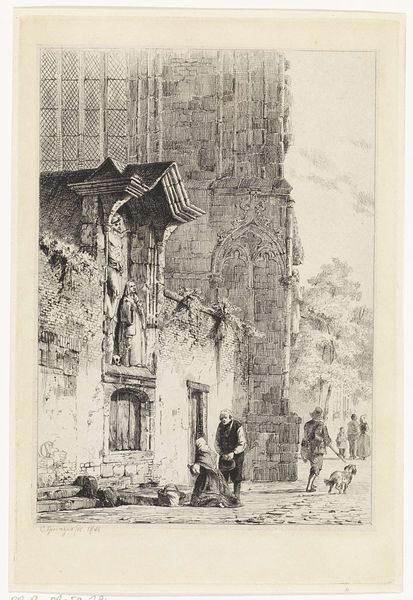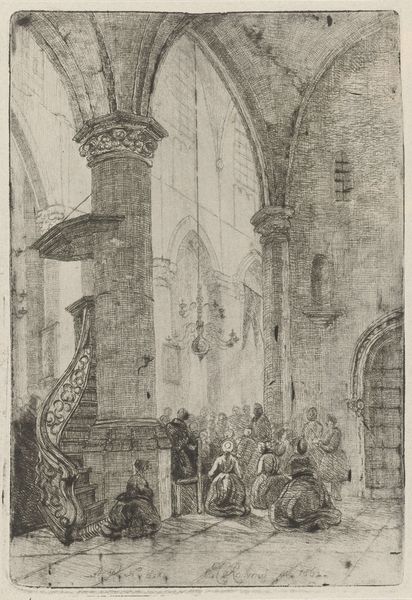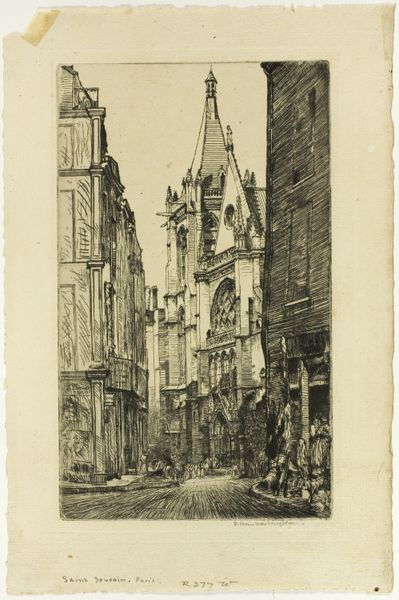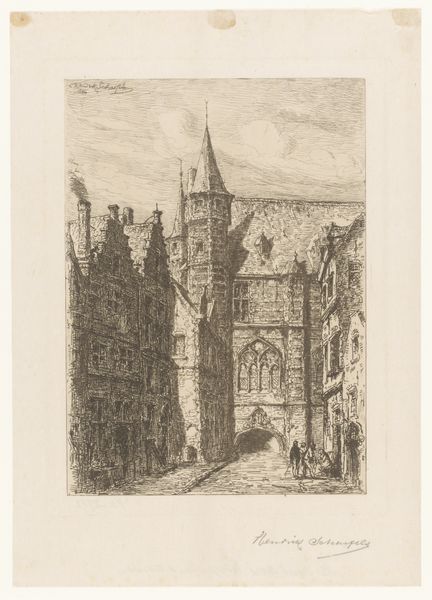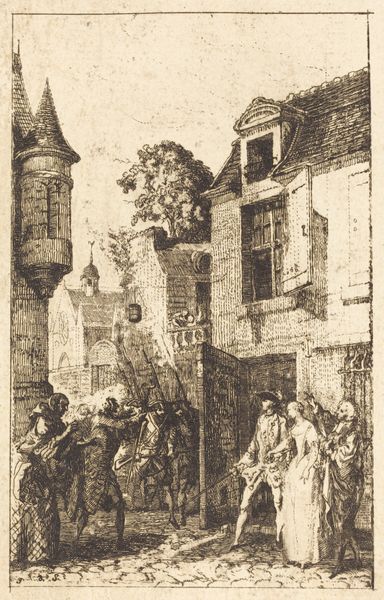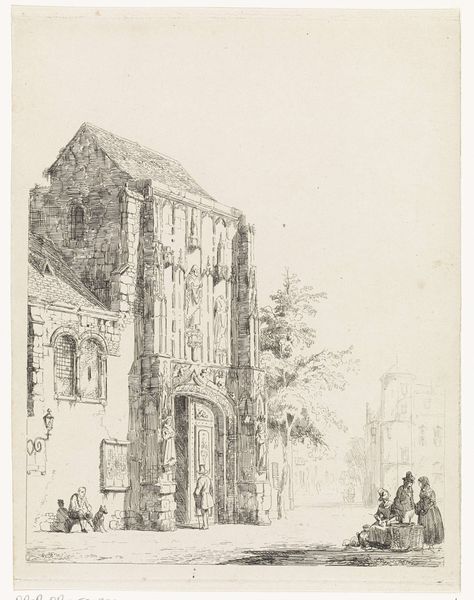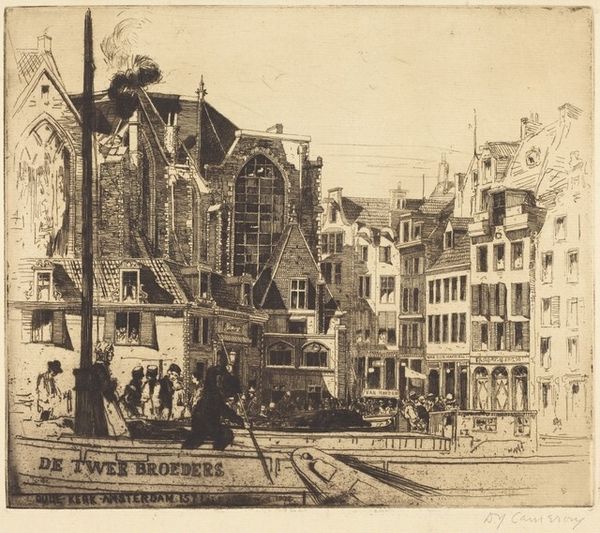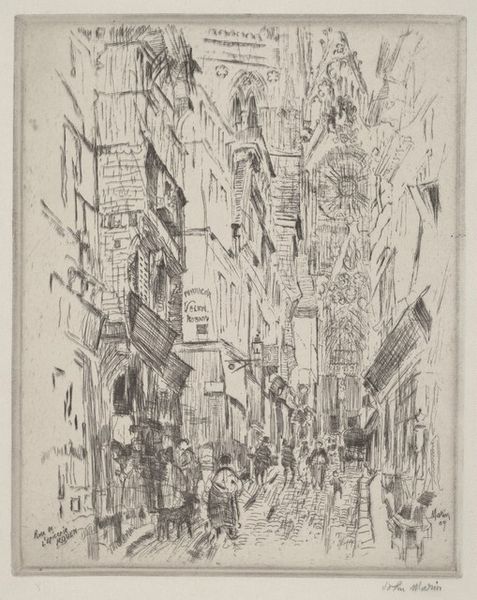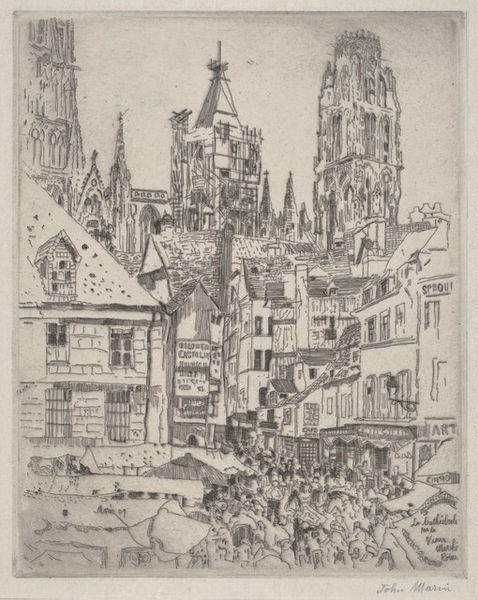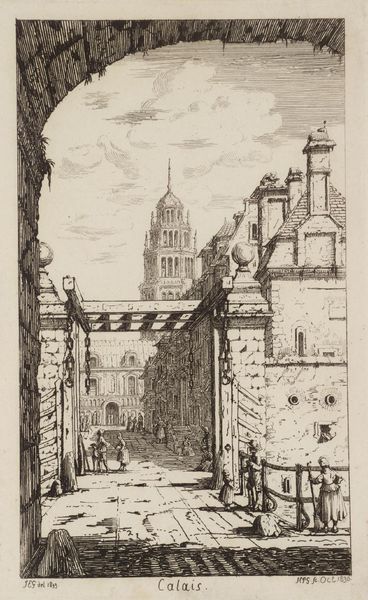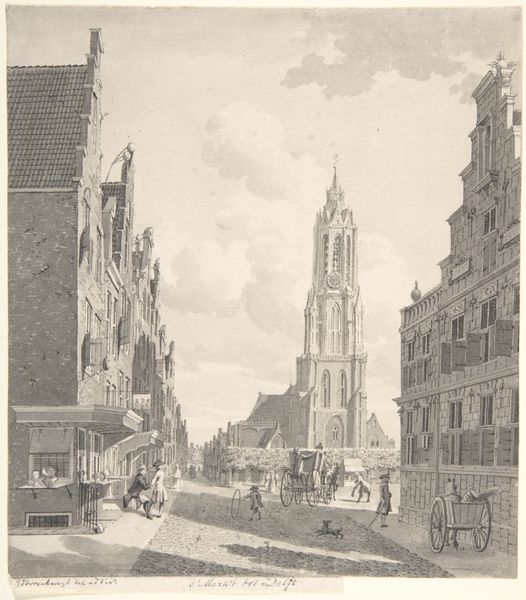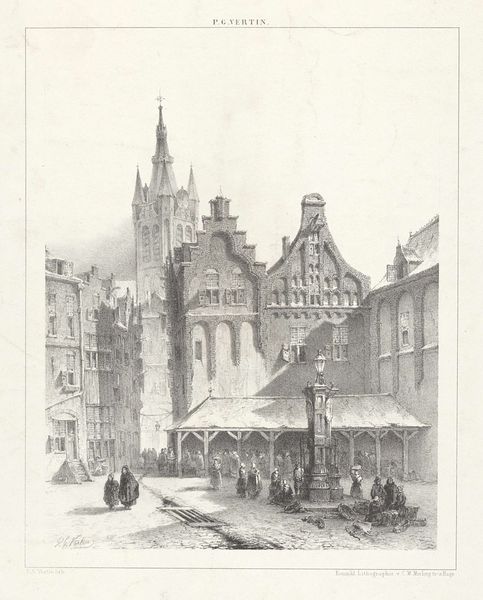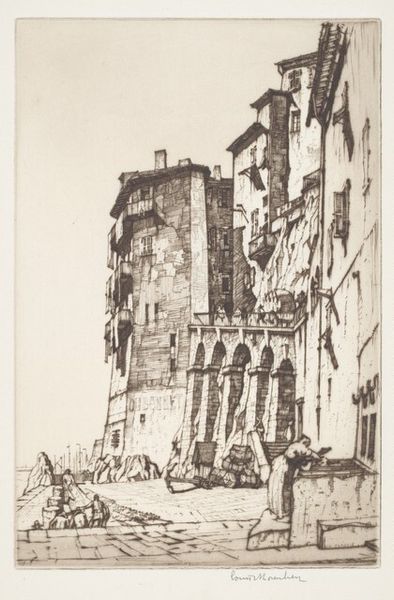
print, etching
# print
#
etching
#
landscape
#
cityscape
#
realism
Dimensions: plate: 25.5 × 17.5 cm (10 1/16 × 6 7/8 in.)
Copyright: National Gallery of Art: CC0 1.0
Editor: This etching, "Fish Market, Marseilles," was created by Henry Rushbury in 1922. It has such a frenetic energy. I’m really struck by the sheer number of figures packed into this marketplace scene, the deep shadows, and all of those meticulously rendered architectural details. What's your interpretation of this work? Curator: Rushbury certainly captured the vibrant pulse of a working marketplace. To truly appreciate this etching, though, consider its historical context. In the early 20th century, artists like Rushbury were documenting the changing face of European cities. Marseilles, a bustling port city, was a microcosm of broader social and economic transformations. Rushbury's realism isn't just about surface appearances, it also gives insight into a moment in the history of Marseilles' working class and economy. Does that reading shift your initial impression at all? Editor: That’s helpful to keep in mind. Seeing it as documentation adds a layer of seriousness. The hustle depicted wasn’t just a candid capturing, but one deliberately presented at the wake of great socio-economic shifts, and even possible class tension. Curator: Precisely. Also, think about the role of prints in disseminating imagery at this time. Etchings like this made urban scenes accessible to a wider audience beyond those who might visit Marseilles. This plays a role in shaping how these scenes can become mythologized through consumption. What purpose would an artist such as Rushbury create imagery like this, when photographic processes are getting ever more advanced and accessible? Editor: Right, they become cultural documents, mediating our understanding of these historical spaces and social dynamics through this unique style, even as newer technologies start to usurp traditional printmaking. Thank you, I’m already seeing more texture here! Curator: My pleasure! History shapes how we interpret visual media and culture, just as they continue to reflect and redefine our ever-shifting landscape.
Comments
No comments
Be the first to comment and join the conversation on the ultimate creative platform.
